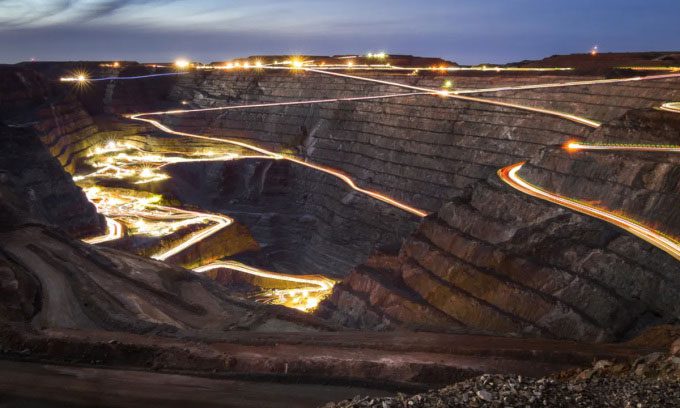The Point at Which Humanity Depletes Metals is Controversial Due to Factors Such as Deep Mining and Recycling
Geological processes take thousands, even millions of years, to form mineral deposits. However, humans are extracting and using minerals faster than they can be replenished. According to some estimates, though still contentious, the supply of certain metals could be exhausted in less than 50 years, IFL Science reported on August 16.

Humans are extracting and using minerals faster than they can be replenished. (Photo: Christoph Schaarschmidt).
Iron is the fourth most abundant element in the Earth’s crust, although most of it lies deep underground, with only a small portion accessible as iron ore. In 2022, experts estimated that Earth contains about 180 billion tons of raw iron ore, with a total content of approximately 85 billion tons. Although this may sound abundant, it will not last forever.
Iron ore could be depleted by 2062, American environmental analyst Lester Brown wrote in his book Plan B 3.0: Mobilizing to Save Civilization, published in 2008. He also argued that other critical mineral supplies such as lead and copper could be exhausted in the coming decades.
“Assuming an annual extraction growth rate of 2%, according to data from the U.S. Geological Survey (USGS) on economically recoverable reserves, the world has enough lead reserves for 17 years, 19 years for tin, 25 years for copper, 54 years for iron ore, and 68 years for bauxite (an aluminum ore)”, Brown wrote.
However, this assessment has sparked significant controversy. Other studies indicate that the likelihood of metal depletion is considerably lower than Brown’s estimates. Additionally, humans can recycle iron and related materials like steel, meaning that the reserves in the Earth’s crust are not the only consideration.
The primary metal at risk of total depletion within the next 100 years is copper, according to research by Theo Henckens, an expert at Utrecht University, published in the journal Science Direct in 2021. Six other minerals are likely to be depleted in about 100 to 200 years: antimony, gold, boron, silver, bismuth, and molybdenum. Additionally, nine minerals may be depleted in 200 to 1,000 years: indium, chromium, zinc, nickel, tungsten, tin, rhenium, selenium, and cadmium.
Other scientists argue that mineral depletion is not a major concern. Some believe that humanity has only scratched the surface of Earth’s mineral supplies. Most of the mined deposits have been found at depths of only 300 meters in the Earth’s crust, yet many possible reserves may lie much deeper.
As technology continues to advance, it is possible that humans will extract these deep reserves. However, the question remains whether it can be done without harming the planet or humanity itself.
“Do not confuse mineral resources existing within the Earth with reserves — the part of mineral resources that has been identified, quantified, and can be economically extracted. Some studies predict shortages based on statistical data on reserves, meaning only a very small portion of the total resources that exist,” said Lluis Fontboté, a professor in the Earth Sciences Department at the University of Geneva. He also noted that the real issue here is not resource depletion but the environmental and societal impact of mining activities.





















































